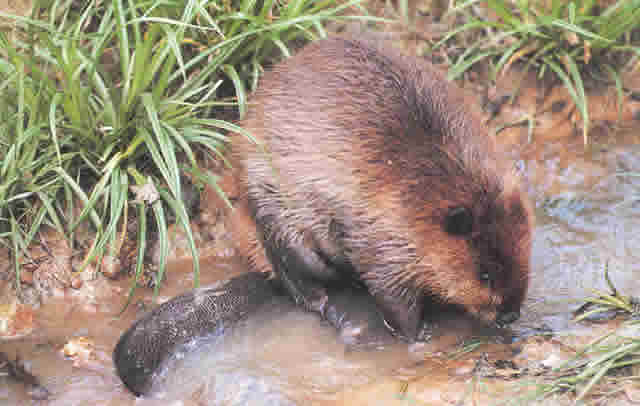My friends and I are pretty adventurous, but this last weekend, we got to witness beaver removal firsthand on our weekend adventure. It’s weird, but true.
When we go on one of our little weekend adventures, we pack up one of our cars with food, sleeping bags and a tent or two, and then we just drive. We drive as far as we can on one tank of gas, and when we stop to fill up, we ask the gas station employee for cool places to camp around the area. We get directions, buy some cold drinks, get back in our gassed-up vehicle, and drive towards the general area pointed out to us. But, we don’t go to the camp grounds. Instead, we look for little side roads that aren’t very heavily traveled, and head down one until we find something interesting or until it gets dark enough to set up camp.

(Artwork by Sharon Davis. Contact us for her contact info.)
This last weekend, our little dirt road led us right up and over the crest of a mountain, something that rarely happens. We were driving my friend’s little four-door sedan, so it was kind of iffy whether or not we’d actually make it over the crest. There were times we nervously joked about what we’d do if the car just got stuck up there in the middle of nowhere. Would we walk back down the mountain or just camp wherever we got stuck? Miraculously, though, that little car kept on going up, up, up and over the mountain to the beaver removal site.
We found out that this little dirt road was actually a logging road. Of course, by then we knew it was intended for much more rugged vehicles than we were driving, but we didn’t care. We were on an adventure. We discovered this tiny little logging town in the middle of the forest. A small store sat in the middle of log cabins, and a make-shift golf course. The “golf course” was just a series of tree trunks with numbers painted on them, indicating the “holes.” It was off-season, so the town was only occupied by a handful of people, most of whom were now involved in the beaver removal project.
Apparently, a couple of beavers had dammed up a creek and created a small lake, or giant pond, whichever you want to call it. Unfortunately, the dirt logging road was now located under the water. For the loggers, it meant they had to remove the beavers and their beaver dam in order to let the road dry out in time for logging season. For us, it meant the only way back down off the mountain was back the way we came.
We watched as the backhoe broke through the felled trees blocking the waterway. The beavers were nowhere to be seen, but we imagined they were in a safe place witnessing the destruction of their destruction. Slowly, the machinery broke through the beaver dam. The water rushed out at first, forming temporary creeks that led down the mountain. Then, as the water slowed and the day got darker, my friends and I set up camp nearby. Some of the loggers joined us by the fire, and we listened to logging stories until late that night. It was an odd adventure, but entertaining. After all, we got to play logger golf and witness beaver removal. Who knows what’ll happen next weekend?



